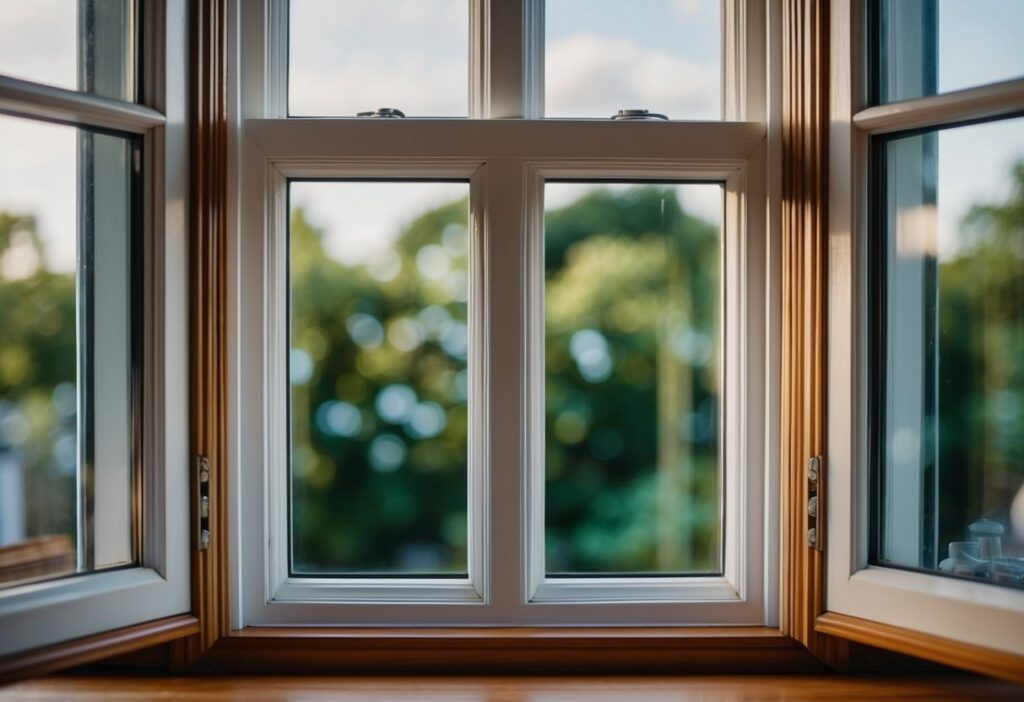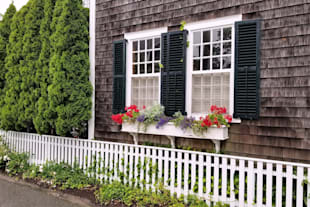Double hung sash windows are a classic and versatile window style. They have two movable panels called sashes that slide up and down within the frame. Both the top and bottom sashes can open independently, allowing for flexible ventilation options.
These windows have been popular in homes for centuries. The design lets you open the top, bottom, or both sashes at once. This gives you control over airflow and makes cleaning easier. Double hung sash windows suit many architectural styles, from traditional to modern.
Sash windows come in different materials like wood, uPVC, or aluminium. They can be customised with various glass types and finishes. Double hung sashes offer a timeless look while providing practical benefits for any home.
Design and Functionality
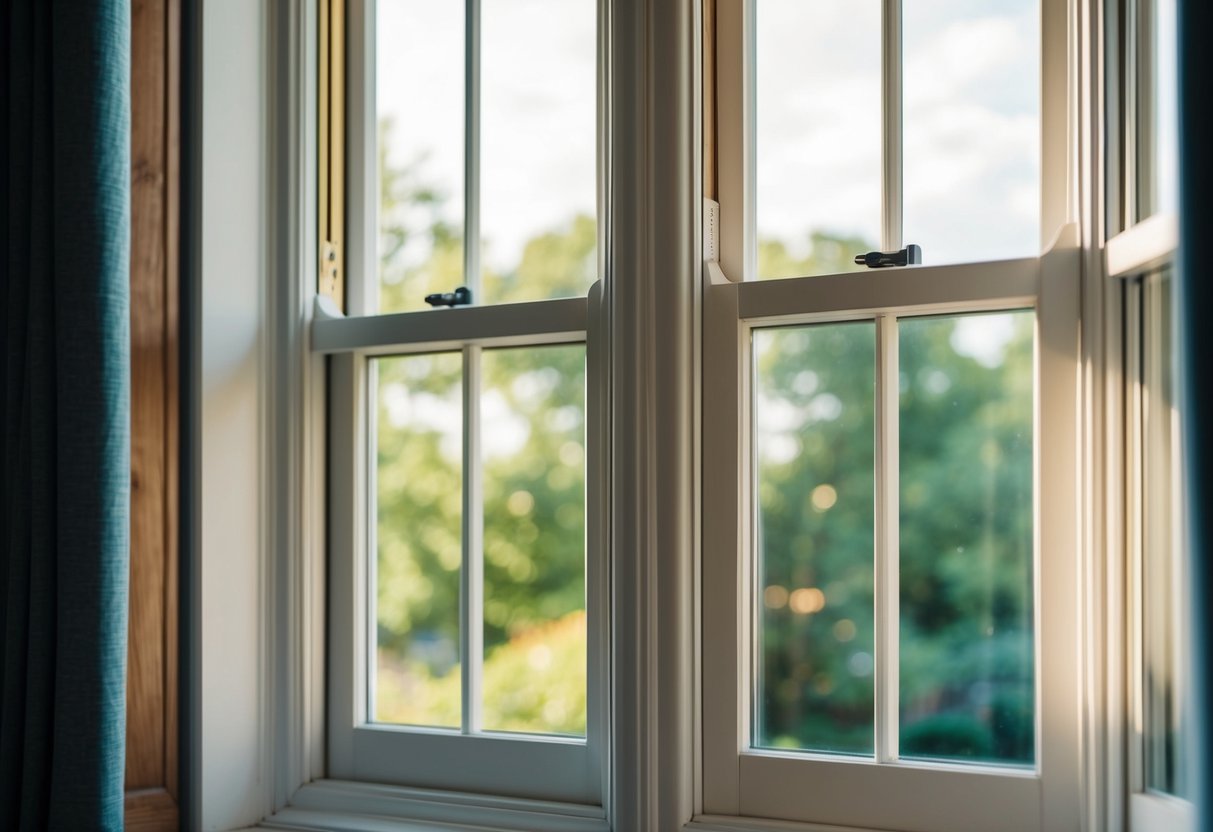
Double hung sash windows have a unique design that allows for versatile operation. These windows feature two movable panels that slide vertically within the frame, offering improved ventilation and ease of use.
Defining Double Hung Sash Windows
A double hung sash window consists of two separate sashes that move up and down in the window frame. Each sash can be opened independently, allowing for flexible airflow control. The top and bottom sashes slide past each other in separate tracks built into the side jambs.
These windows are popular in many homes due to their classic look and practical functionality. The design allows users to open either the top or bottom sash, or both at once, to manage air circulation effectively.
Comparison with Single-Hung Windows
While single-hung and double hung windows may look similar, they have key differences in operation. Single-hung windows have a fixed upper sash and a movable lower sash. Only the bottom part can be opened.
Double hung windows offer more ventilation options. Both sashes can be opened, allowing warm air to escape from the top and cool air to enter from the bottom. This creates better airflow compared to single-hung windows.
Double hung windows are also easier to clean. Many models tilt inwards, making it simple to reach the exterior glass from inside the home.
Typical Components and Operation
The main parts of a double hung sash window include:
- Window frame
- Two vertically sliding sashes (top and bottom)
- Sash cords or balance systems
- Sash locks
- Muntins (optional)
- Sill
- Jambs
Modern double hung windows often use spring-loaded balance systems instead of traditional weights and pulleys. These help the sashes move smoothly and stay in place when opened.
To open the window, users can lift the bottom sash or lower the top sash. Many windows have tilt-in features for easy cleaning. A sash lock keeps the window securely closed when needed.
Installation and Maintenance
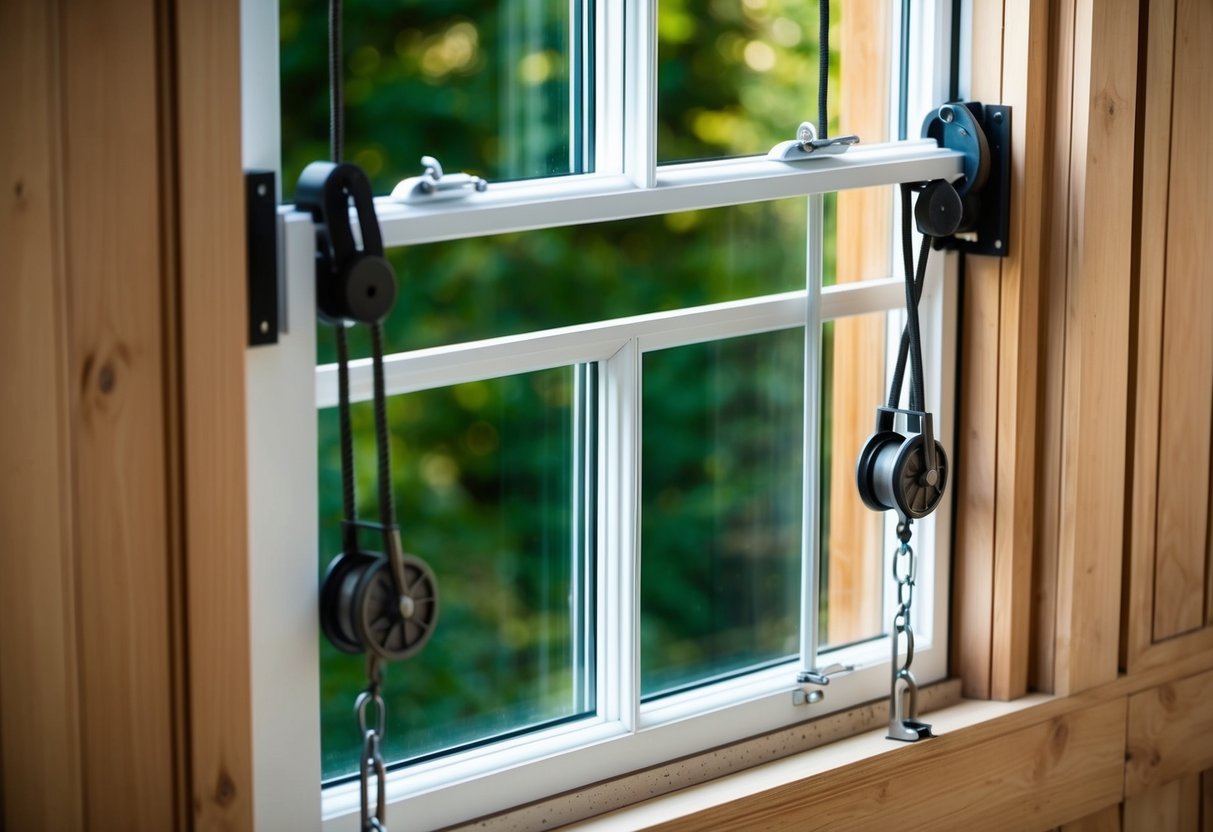
Double hung sash windows need proper setup and care to work well and last long. Getting them fitted right and keeping them clean helps avoid issues. Tackling rot early is key for wood frames.
Proper Installation
Fitting double hung sash windows correctly is crucial. A snug fit prevents drafts and water leaks. Start by measuring the opening carefully. Use shims to level the frame and ensure it’s square. Seal gaps with insulation foam and caulk.
Attach the frame securely to the house structure. Install flashing above the window to direct water away. Check that both sashes slide smoothly and lock properly. Proper installation helps the window work well and last longer.
Cleaning and Upkeep
Double hung sash windows are easy to clean. Tilt in the sashes to reach outside glass from indoors. Use a mild soap and soft cloth to wash the glass and frame. Dry thoroughly to prevent water spots.
Vacuum tracks and sills to remove dirt. Lubricate moving parts yearly with silicone spray. Check weatherstripping and replace if worn. Clean weep holes to allow water drainage. Regular cleaning keeps windows looking good and working smoothly.
Preventing and Handling Rot
Wood double hung windows can rot if exposed to moisture. Paint or seal wood frames to protect them. Fix any peeling paint quickly. Ensure proper drainage around windows to keep water away.
Check for soft spots in the wood yearly. Catch rot early by probing with a screwdriver. Small areas of rot can be fixed with wood filler. Large rot issues may need sash or frame replacement. Good ventilation inside helps prevent condensation and rot.
Performance and Energy Efficiency
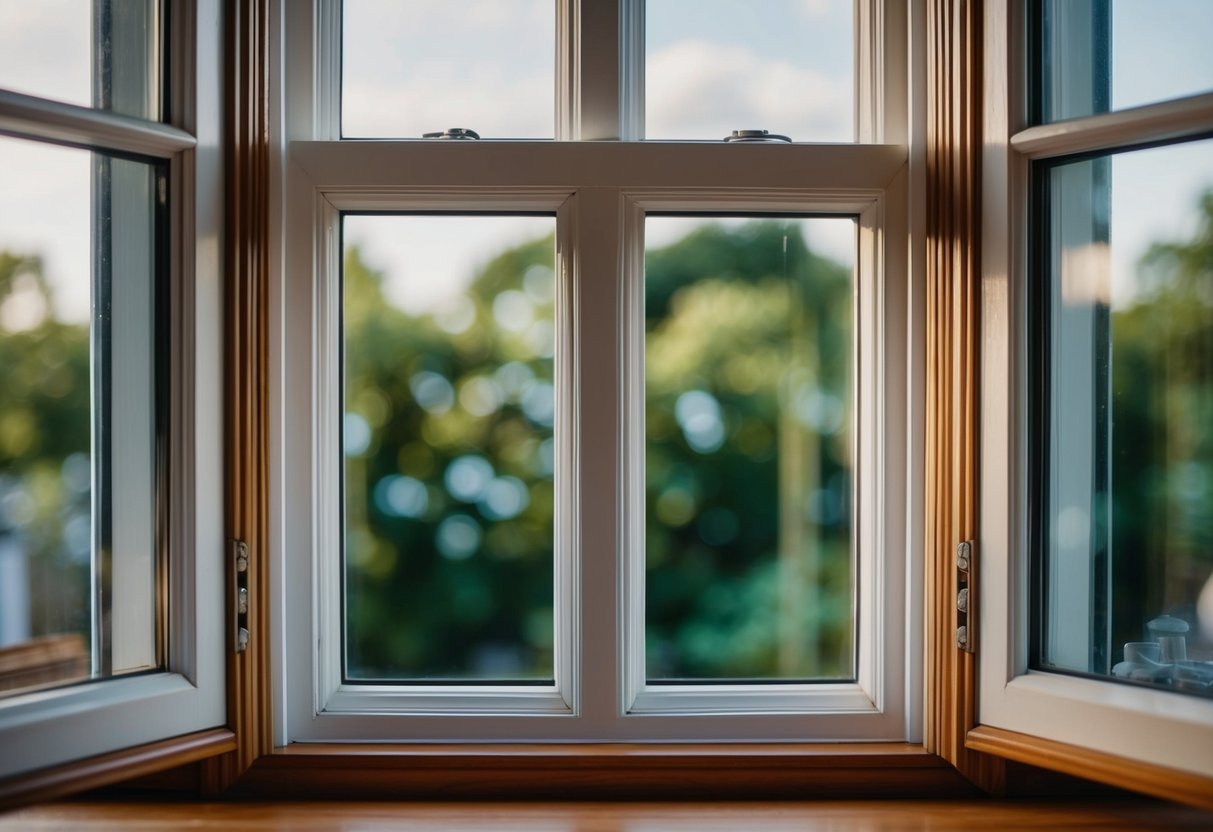
Double hung sash windows offer several options to boost energy efficiency and performance. The design allows for good ventilation and insulation when properly installed and maintained.
Insulation Properties
Double hung sash windows can provide good insulation when fitted correctly. The two movable sashes create a seal that helps block air leakage. Weather stripping around the sashes improves the seal further. Some double hung windows have multiple chambers in the frame for added insulation.
Proper installation is key for insulation. Gaps around the frame let air and moisture in. This reduces efficiency. Professional fitting helps avoid these issues.
Double glazing boosts insulation significantly. It uses two panes of glass with a gap between. This slows heat transfer. Triple glazing offers even better insulation but costs more.
Glazing Options
Several glazing choices can enhance double hung window performance. Low-emissivity (low-E) glass has a special coating. It reflects heat while letting light through. This improves thermal efficiency year-round.
Gas fills between glazing panes boost insulation. Argon is common. It insulates better than air. Some windows use krypton gas for even better results.
Tinted glass reduces heat gain from sunlight. This helps keep homes cooler in summer. But it also reduces natural light.
Some glazing has built-in blinds or shades. These sit between the panes. They offer privacy and light control without collecting dust.
Aesthetic and Historical Significance
Double-hung sash windows have shaped British architecture since the 17th century. Their elegant design and practical function have made them a key feature of many period homes.
Architectural Impact on British Homes
Box sash windows became popular after the Great Fire of London in 1666. They quickly spread across the country, defining the look of Georgian and Victorian houses. These windows have thin glazing bars that divide the glass into smaller panes. This creates a classic grid pattern that adds charm to building facades.
Sash windows allow for good air flow and natural light. Their design lets homeowners open the top, bottom, or both sections. This flexibility made them a hit in both grand town houses and modest country cottages.
Today, sash windows remain a sought-after feature. Many modern homes use them to add a touch of timeless elegance. Their enduring appeal shows in how often they’re restored in period properties.
Material and Craftsmanship
Timber was the original material for sash windows. Craftsmen used their skills to create durable, beautiful windows that could last for decades. The wood was often oak or pine, chosen for its strength and ability to withstand the British weather.
The craft of making sash windows involves precise joinery. Each part must fit perfectly to ensure smooth operation and proper sealing. Glazing bars need careful shaping to hold the glass securely while maintaining a slim profile.
While modern materials like uPVC are now used, many still prefer traditional timber for its authentic look and feel. The skill needed to make and repair wooden sash windows keeps alive an important part of British craftsmanship.
Security and Safety Considerations
Double hung sash windows offer unique security and safety features. These windows can be designed with special locks and stops to boost home protection and child safety.
Safety Features
Double hung sash windows come with several built-in safety features. Sash locks secure the window when closed, making it harder for intruders to enter. Limit stops prevent the window from opening too far, which is great for child safety.
Some models have tilt-in mechanisms. This feature allows for easy cleaning from inside the home. It’s safer than cleaning from a ladder outside.
Many double hung windows also offer child safety locks. These can be set to allow only partial opening of the window.
Enhancing Window Security
To boost security, homeowners can add extra locks to their double hung sash windows. Night latches or sash bolts can be fitted to both top and bottom sashes for added protection.
Security films can be applied to the glass. These make it harder to break through the window. For ground floor windows, consider planting thorny bushes below. This can deter potential intruders.
It’s vital to check and maintain window locks regularly. Worn or faulty locks should be replaced promptly. When leaving the house, always ensure all windows are fully closed and locked.
